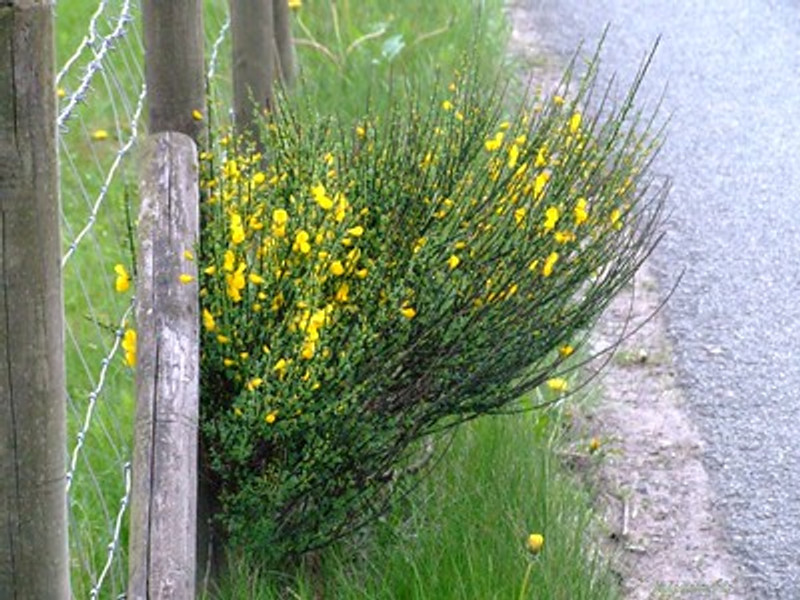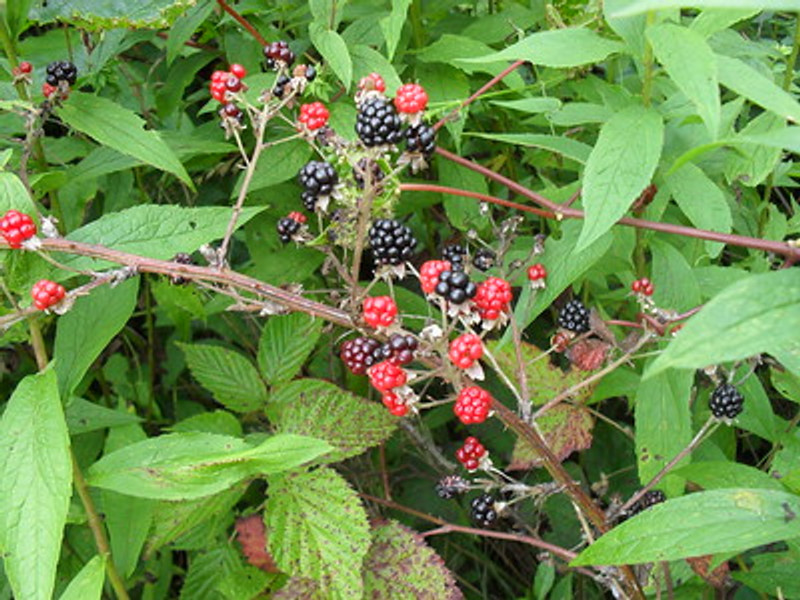Wily Weeds
The term “weed” is a little bit of a misnomer - the term weed could apply to any plant, if it’s not quite where we want it to be. Some species however, are known as invasive weeds - these are plants that are introduced into a new area and spread very quickly, altering the new environment. Often, these plant species take over areas, creating a monoculture and have little benefits for native wildlife. Plants considered weeds may also attract undesirable species (i.e. sycamores attract wasps and likely rats too), do not produce foods native species eat and/or are not places native wildlife use to create their homes. These are the “weeds” we target when we have weeding working bees in community spaces as well as the weeds we are interested in helping you manage in your backyard (check out the info on our Facebook event here about the upcoming Weed Bash on 14th November). An important aspect of weeding, however, is replanting - replacing the weeds we remove with native plant species that can provide good quality habitat and delicious flowers and fruits for wildlife such as birds, invertebrates and lizards. Some of the weeds we are specifically targeting for the upcoming Weed Bash include banana passionfruit vine, old man’s beard, gorse, broom, sycamore, buddleia, Japanese honeysuckle and blackberry.
Banana passionfruit vine
Banana passionfruit vine (Passiflora tripartita) climbs onto trees and smothers them. When in flower, note the pink, tubular hanging flowers and during fruiting the banana-shaped fruit ripen from green to yellow or black. The leaves have three lobes.
Think about replacing banana passionfruit vine with a native clematis such as Clematis cirrhosa.
Old Man's Beard
Like banana passionfruit vine, old man's beard (Clematis vitalba) climbs onto trees. It creates a thick blanket that can smother trees. Each stem has five leaflets. Old man's beard flowers from December to May, so soon it will be a good time to start looking out for the creamy white, fragrant flowers which are followed by fluffy tailed seeds.
You could try replacing old man's beard with other clematis species such as small white clematis (Clematis forsteri) or Clematis "Henryii".
Gorse
Gorse (Ulex europaeus) is a member of the pea family, in part characterized by the seed pods and pea like yellow flowers. The hairy seed pods explode when ripe, spreading seeds over 5 meters away from the parent plant. You may often see hillsides of yellow from May - November - these are usually fields of gorse. Grose also has thick spiny leaves.
Gorse can act as a nursery plant for native seedlings - once the seedlings overtop the gorse, it will usually die back.
Broom
Like gorse, broom (Cytisus scoparius) is also in the pea family. The long green seed pods ripen to black and explode to disperse the seeds 1-5 meters from the parent. They can spread quickly, forming stands that dominate other habitat types. It can tolerate a range of temperatures from warm to very cold and many habitat types, of particular concern are river systems and forest margins. As nitrogen fixers, they can chance the soil composition, altering which plant species can grow.
Sycamore
Sycamore (Acer pseudoplatanus) is a deciduous tree from the maple family. The bluish-green five lobed leaves extend from the branches with reddish stems. Deciduous means it drops its leaves during the autumn months. The fallen leaves create a thick blanket on the forest floor which can smother any small native seedlings. However, sycamore seedlings themselves are shade tolerant. Seeds have a distinctive 'helicopter' shape which can spread widely. They can form dense stands, often excluding any other species from growing.
Consider planting black or mountain beech instead. Black beech is so called for the black sooty mould that covers the trunk and branches. The presence of the sooty mould does not appear to harm the tree and is caused by a scale insect that sucks the tree's sap, producing a sweet liquid called honey dew. Honeydew feeds the mould as well as being a food source for other species such as Kākā.
Buddleia
Buddleia (Buddleja davidii) are deciduous shrubs with many angled stems. Stems have tufts of soft wooly hairs and soft willow-like finely serrated leaves. The leaves feel soft underneath. The hanging clusters of purple or white flowers can be seen from December to February. Buddleia shrubs can grow quickly forming dense groups - in riverbeds, buddleia can cause flooding and silt buildup by altering the water flow. They can tolerate a large number of different conditions - poor soils, hot and cold, wet and dry, shade or open areas, damage and wind.
Have a go at planting hebe (Hebe salicifolia - Koromiko) instead. Native pollinators such as native bees love hebe. The tight clusters of flowers are not only aesthetically attractive but also provide nectar for native bees.
Japanese honeysuckle
Japanese honeysuckle (Lonicera japonica) climbs onto trees and can quickly smother them. Japanese honeysuckle is described as a vigorous evergreen - meaning it can grow or spread quickly. They are climbers with long, twining stems that turn from purplish and hairy to woody as they mature. The top of the leaves are shiny and dark green while the undersides are lighter. The sweetly scented tubular flowers mature from white to yellow and can be found from September to May, followed by egg-shaped shiny black berries. They can tolerate a range of habitats.
Have a think about planting perhaps yellow clematis or Lonicera 'Sulphurea'.
Blackberry
Blackberry (Rubus fruticosus agg.) is a thorny vine that forms dense entangled masses that can smother ground and low growing plants, preventing the establishment of native seedlings. These entangled masses make movement through areas they are growing very difficult! The flat leaves have various shapes. The white to pink flowers can be seen from November to April followed by clusters of berries that ripen from red to black. There is a thicket of blackberry in Chingford Park that we are currently managing.
You can find more information on the weedy species on the weedbusters.org.nz website or checking out the Weedbusters "Plant me Instead - Canterbury and Otago" booklet. We have some at the Valley Project if you'd like a hard copy. For more on the species to plant instead, check out the New Zealand Plant Conservation Network website - nzpcn.org.nz.












